Today we’re thrilled to bring you an exclusive look into the making of the new film directed by Sean McClintock, and produced at Hue and Cry, “Into the Flame“. Coming in at a stunning 5:55 in length, in this article Sean gives us an inside looking into the herculean effort it took to produce this beautiful film.
Into the Flame
A Short Film by Hue and Cry
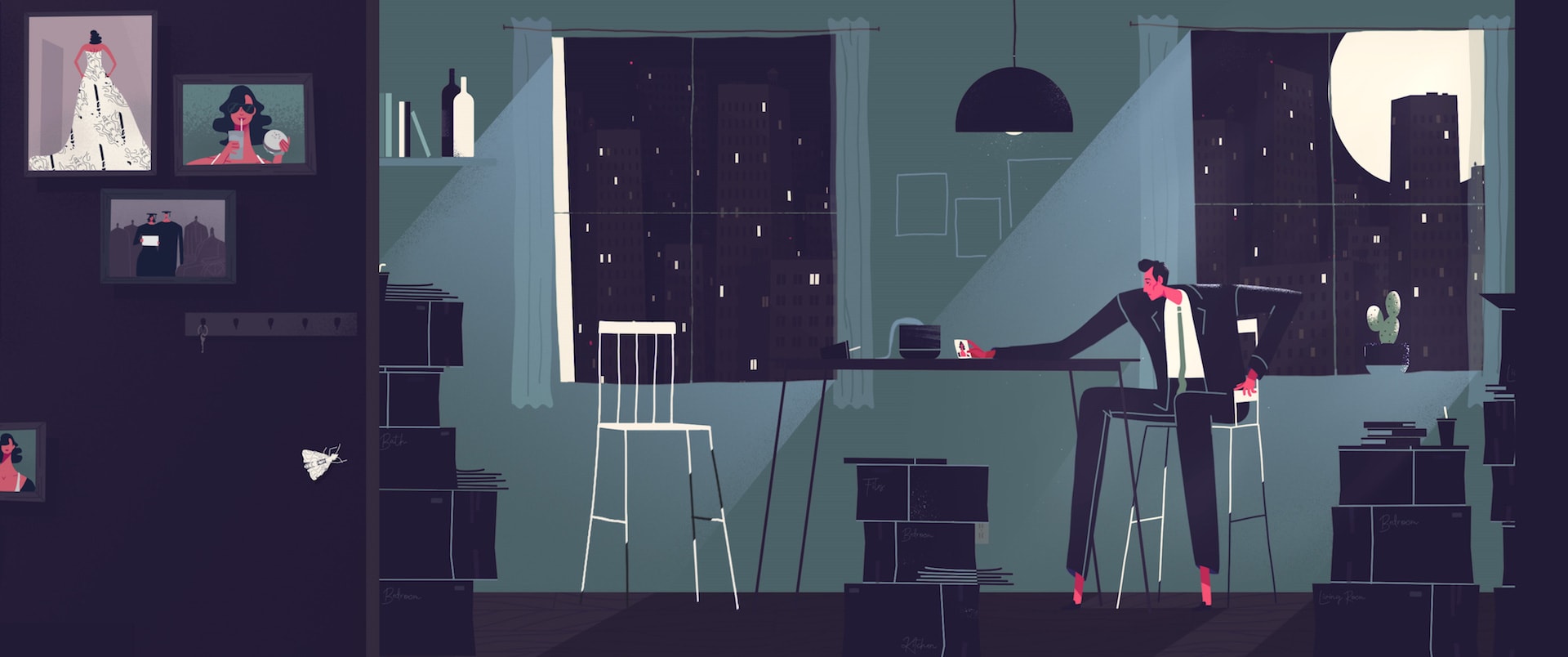
How did this all come about?
It was the end of 2017. My life and the studio were in the midst of some major transitions. I had relocated to Richmond, Virginia that spring and Hue&Cry were becoming a fully independent studio. We wanted to make something that captured what big moments of change can feel like; that fear, confusion, excitement, loneliness, hope, the exhaustion that we all have been through.
I had a rough narrative in mind and I knew I wanted to cut away to manic sequences revealing what was going on in the protagonist’s head. So, as a team, we got together and started exploring.
At this stage, there were no bad ideas. Guy surfing on a piece of pizza? Yes! Floyd’s head spinning inside a microwave? Maybe. A couple’s embrace turning into a moth’s metamorphosis.YES!
We came up with so much great stuff. I’m pretty sure we came up with enough stuff to make 3 or 4 more films. From there, I created a bunch of style frames to set the look, and we were off!
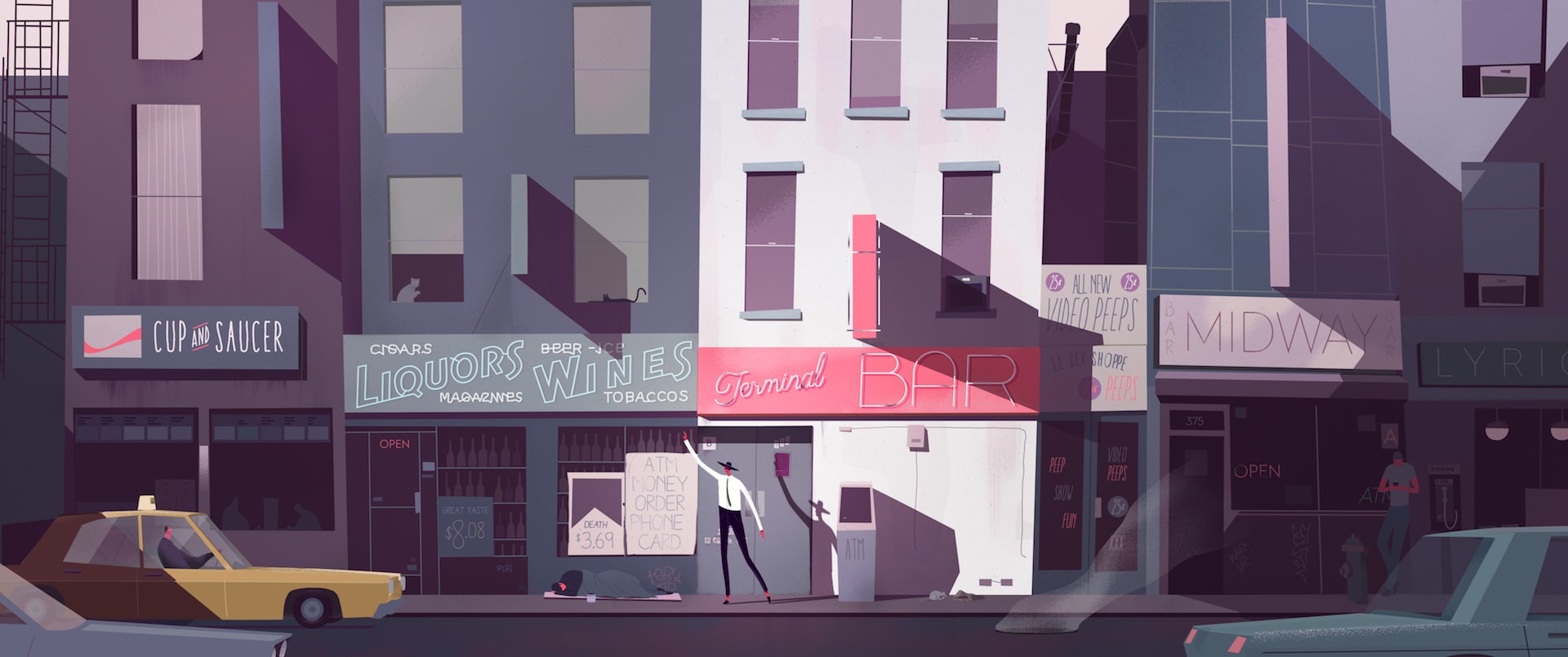
We all know how difficult it can be to find time for personal and/or internal studio projects. How did you all make it happen?
As we were getting the project off the ground, I put in a lot of personal time outside of work –– creating styleframes, pulling our rough ideas together into a boardomatic with a scratch audio track and working through the story.
Heading into production, it was clear that this was going to take a lot of time and resources and would require a huge commitment from the studio to make it a priority. There were countless meetings (partner meetings, staff meetings, etc.) where we had to continue to commit resources toward the film. It takes a lot of intention and follow-through to keep a project like this from being sidelined because of time or financial constraints.
Of course, there were some late nights and weekends that we had to put in to meet the deadline, but everyone dug in and made it happen.
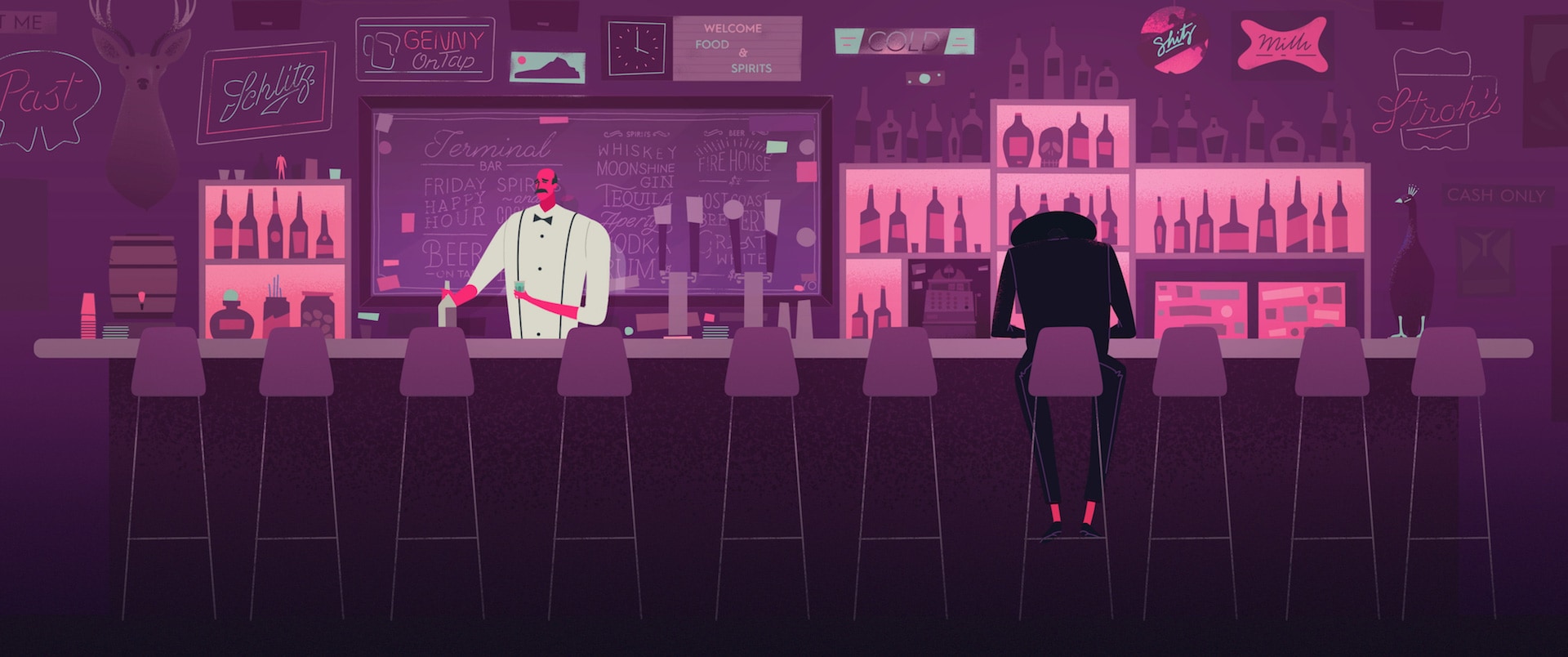
With a project of this scale what tools or processes did you use to keep things from going off the rails?
Spreadsheets! So many spreadsheets. We had a global shot tracker that we used to chart the progress of the 90+ shots in the film. Color-coded comments (I probably spent a little too much time picking out those colors.) allowed us to assign tasks to artists and to ensure that no artist was overloaded. Doing all of this in google sheets made it easy for everyone to keep things up to date.
Weekly team check-ins were also key. We’d go through the tasks altogether and screen the film to see how it was coming together. Seeing it end-to-end helped us maintain perspective on the film as a whole and kept us from focussing too much on one particular sequence.

How did making a short film compare to a typical 15-60 second project?
It was more challenging but equally, more rewarding. Little things like making sure characters stayed on model and didn’t change from scene to scene were much more involved. Also new to us: living with design and story decisions made a year in advance –– wait, are we sure Floyd doesn’t want a mustache?
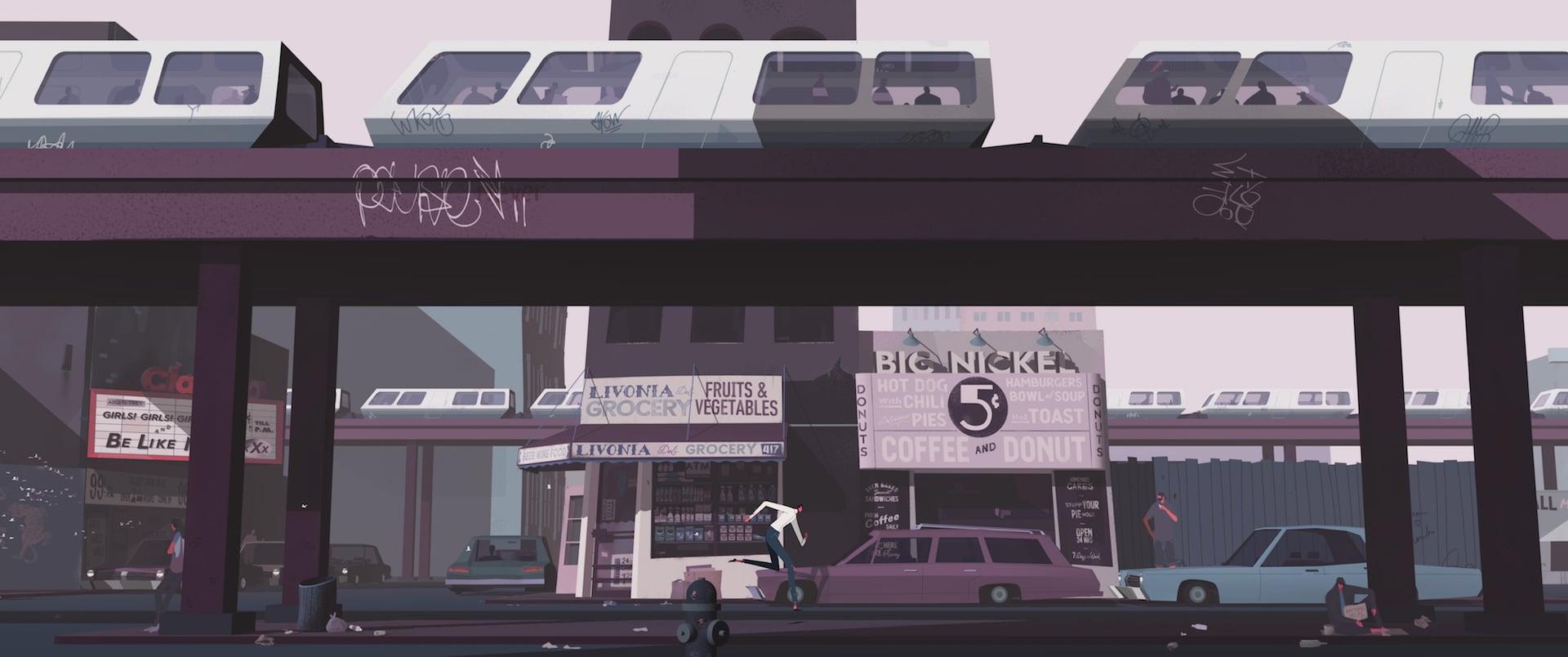
With no dialog, the score and sound design play an even bigger role in the film. How did it come together?
We knew early on that we wanted to avoid relying on dialog to tell the story. We wanted to push ourselves to convey everything through sound and image. This approach allowed for more ambiguity too –– which I found appealing. I really wanted to use animation to tell a more complex, adult story and to avoid anything too childish or trite. Using only sound and image, we were able to create visual metaphors, to allude to more universal themes and engage the viewer’s imagination. I love talking to people after they’ve seen it and hearing how they piece it all together. How they project their own experiences onto the film and come up with something tailored to suit their unique perspective of the world.
For the sound design and original score, we were lucky to have Smider, the talented Italian sound design studio on board as we moved through production. Their all-original score features an insane amount of hand percussion and foley detail. We couldn’t be happier with how it came out.

What were some creative challenges your team faced?
One of the biggest challenges was the moth chase sequence. How do you make moths feel menacing? They’re so soft and fluffy! We also needed them to not only keep up with, but gain on Floyd. Also, getting them to stand out in each of the varying backgrounds was a fun challenge. Next time we’re using tigers.

Looking back on the process, was there a stage you enjoyed the most?
Watching our sketches become a story in the boardo once the soundtrack was added was kinda amazing. Finishing the trailer and seeing the response from the community was definitely up there. Also, the stretches where there was a break in client work and the entire studio was able to focus on Into the Flame were really fun.

What do you hope people take away from the film?
I’d love for some people to come away feeling like they’ve been presented with a beautiful riddle and the desire to go back and unravel it. There’s a lot in there for people to find. I hope everyone is able to take something away that is just a little different and unique to them, depending on their interpretation of the story.
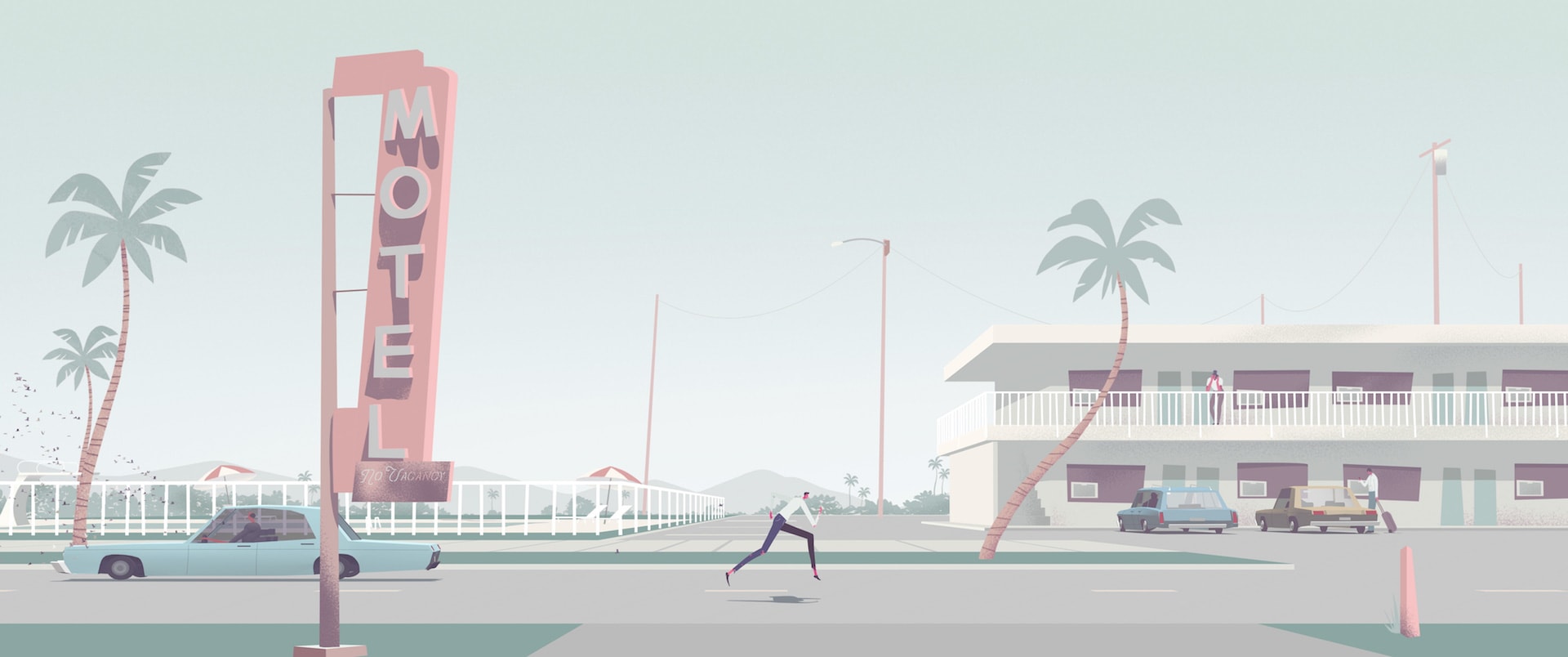
Into the Flame debuts worldwide online today. Why did you go this route instead of the usual 12-15 month festival run followed by an online release?
That wasn’t an easy one. We took a lot of cues from the Andrew Allen’s “Everywhere All at Once” approach which focuses on maximizing exposure. We put everything we had into this film and wanted to share it with as many people as possible. So basically instead of the typical 12-15 month festival run, followed by an online release, you blast it out everywhere (blogs, festivals, social media, etc.). By compressing the film’s release you gain momentum. The main downside is that some festivals will either explicitly deny access to films available online or simply reject them after submission. As a young studio, it was more important for us to gain the exposure now and forgo our dreams of getting into some of the bigger festivals.
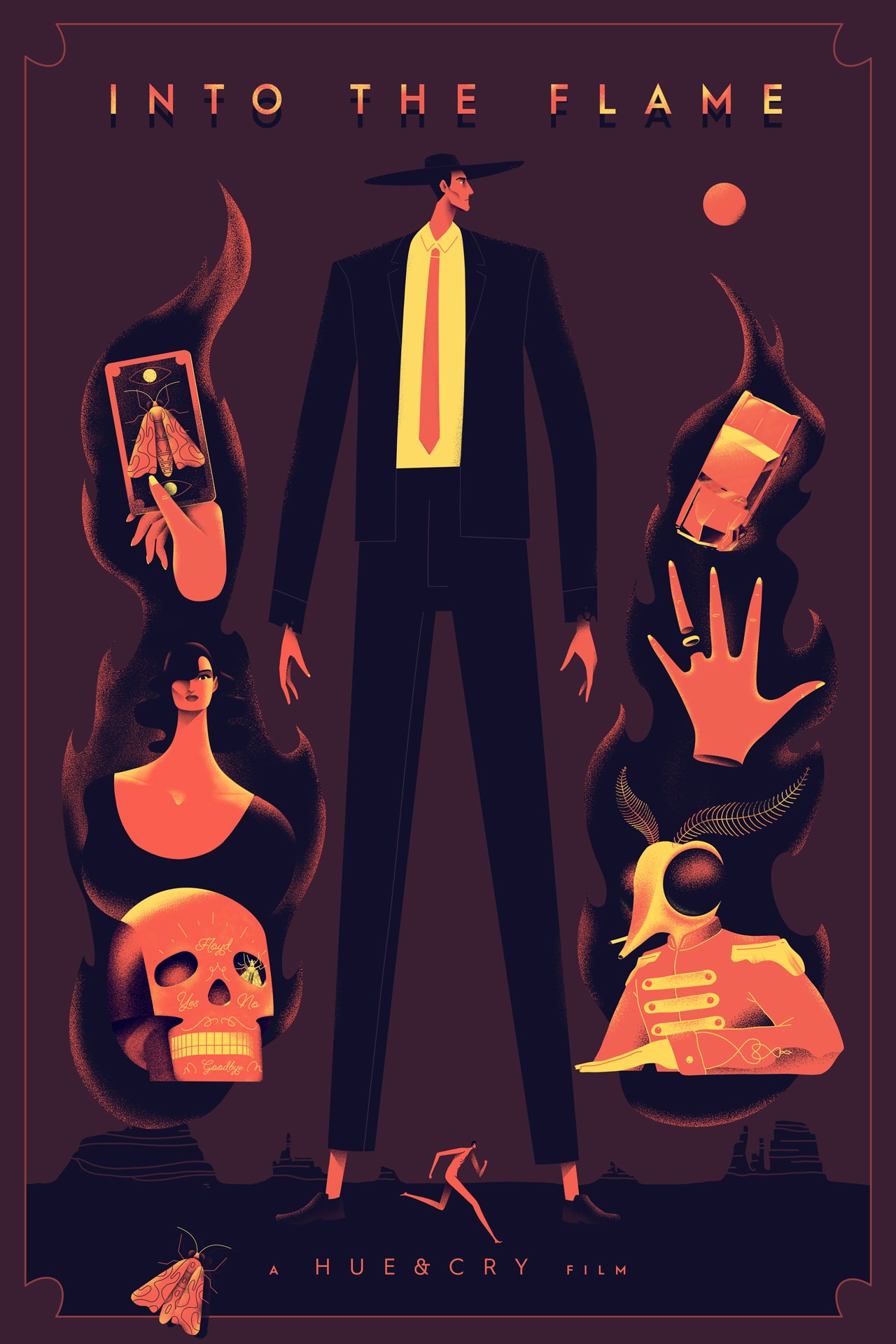
How did you approach launching the film?
More spreadsheets! The launch effort was a much bigger affair than I had anticipated. Between building the press kits, creating all the content for social media, launching the site, planning the launch screening, and sending everything out, it felt like we were starting a small company. I think it helped that there was a bit of pause between finishing the film and starting the launch. That distance gave us some much-needed perspective and kept us from rushing through a very important phase.

What surprised you most about making Into the Flame?
I knew when I moved down to Richmond that the team was chock full of amazingly talented artists. But seeing everyone come together on this and seeing what came out of it kinda took me by surprise. Everyone worked together to solve an endless number of tough technical and logistical challenges. Crazy ideas like animating a 35-second slow-motion walk or a man falling and sliding toward camera was met with “Alright, let’s do it!” or “Let’s give it a shot!”. That overall yes-and approach is what made this film what it is.
The production team is amazing. They created pockets of time for us to keep moving forward where none existed (pretty sure that’s black magic).
Basically, I feel really grateful to have had the chance to work with everyone involved in the making of this film.. This film wouldn’t be what it is today without everyone that was involved.
Watch the behind the scenes video
Credits
WRITTEN & DIRECTED BY
Sean McClintock
CHARACTER DESIGNERS
Timo Prousalis
Diego Abad
Sean McClintock
DESIGNERS
Sean McClintock
Timo Prousalis
Diego Abad
Angie Yeun Son
Matt Deans
2D ANIMATORS
Timo Prousalis
Diego Abad
David John Reyes
Travis Schmidt
Sean McClintock
Ryan Musselman
Reza Iman
Kavan Magsoodi
Lauren Cash
LEAD ANIMATOR
Timo Prousalis
3D ANIMATORS
Travis Schmidt
Ryan Musselman
Sean McClintock
Paul Wei
Anthony Palermo
CONCEPT & STORY ASSISTANCE
Sean McClintock
Timo Prousalis
Matt Deans
Diego Abad
Ryan Musselman
Travis Schmidt
Magnus Hierta
David John Reyes
Angie Yeun Son
Mariah Hourihan
Jeff Bybee
Whitney Green
Cloie Leger
Giao Roever
STORYBOARD ARTISTS
Diego Abad
Timo Prousalis
Matt Deans
Sean McClintock
TECHNICAL DIRECTION
Ryan Musselman
Travis Schmidt
EXECUTIVE PRODUCERS
Magnus Heirta
Sean McClintock
Whitney Green
SENIOR PRODUCER
Jeff Bybee
JUNIOR PRODUCER
Cloie Leger
EDITORS
Sean McClintock
Danny Reidy
COMPOSITORS
Angie Yeun Son
Ryan Musselman
David John Reyes
Travis Schmidt
Diego Abad
Richelle Son
Carly Johnson
Morgan Allison
Sean McClintock
Timo Prousalis
CLEANUP ASSITANCE
Symbiosys
SOUND DESIGN
Niccoló Chotkowski
Guido Montalcini
DRUMS
Niccoló Chotkowski
FINAL MIX
Overcoast
HUE&CRY
EXECUTIVE CREATIVE DIRECTOR
Magnus Hierta
EXECUTIVE PRODUCER
Whitney Green
CREATIVE DIRECTOR
Sean McClintock
SENIOR PRODUCER
Jeff ByBee
ASSOCIATE PRODUCER
Cloie Leger
NEW BUSINESS LEAD
Giao Roever
ART DIRECTOR
Angie Yeun Son
LEAD ANIMATOR
Timo Prousalis
SENIOR ANIMATOR
Ryan Musselman
ANIMATORS
Travis Schmidt
Diego Abad
David John Reyes
OFFICE COORDINATOR
Hillary Zell






